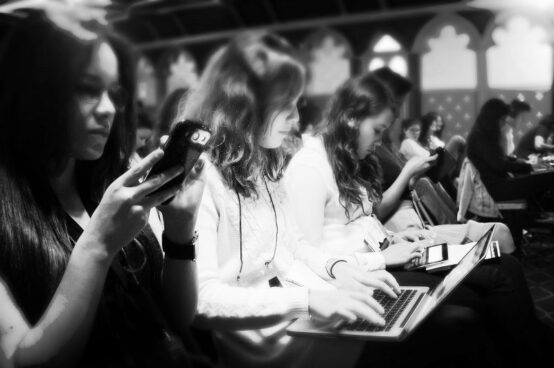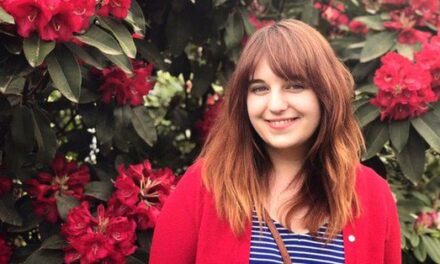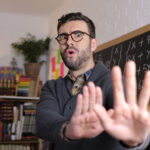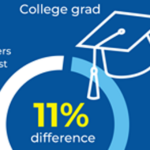A former teacher returning to journalism describes how the field has changed and how she’s using her classroom experience to inform her coverage.
By Carly Flandro
When I announced my return to the newsroom after spending eight years as a high school English teacher, many of the journalists I know responded warily: “Welcome back to a better profession (?)”
They were quick to point out that today, journalism has many of the same problems the teaching profession does – low pay, public disrespect, and ever-dwindling resources.
But the journalism world I left in 2012 in many ways seems remade today – for the better.
The journalism world I left in 2012 in many ways seems remade today – for the better.
Since late June, I’ve been calling myself a reporter again. This time it’s for Idaho Education News, a nonprofit news source that has reimagined the business model for journalism in a way that’s much improved from the seemingly dying industry I left 11 years ago.
So while some may think I’m jumping one sinking ship for another, I say otherwise.
Nonprofit journalism is buoyed by donors who believe in the value of a free press and an informed public. They’re giving journalists hope – a chance to focus on quality over quantity and service over profit.
That wasn’t the case 11 years ago.
Back then, I was covering environment and politics in Montana, at a time when daily print newspapers were facing a precipitous transition to online formats. Paper subscriptions declined, profits declined, and furloughs and layoffs increased.
The newsroom itself was enveloped in an ever-present miasma of dread, like being on that slowly sinking ship and watching others go under as you wait your turn.
While some may think I’m jumping one sinking ship for another, I say otherwise.
I remember telling a stranger on a ski chairlift that I was switching from journalism to education, and he commented on what a shrewd decision that was.
“There may not always be newspaper subscribers, but there will always be children,” he said.
His response surprised me. I didn’t think about the world in such calculated ways. Then, as now, I’ve always been guided by idealism and a belief in clichés such as “making a difference” and “fighting for cornerstones of democracy.”
I have to believe that what I do every day is deeply meaningful and makes a positive difference in the world – otherwise it’s not worth spending my life on. While both are difficult careers, education and journalism have at least stood up to my rose-colored standards.
I have to believe that what I do every day is deeply meaningful and makes a positive difference in the world – otherwise it’s not worth spending my life on.
Now, as an education journalist, I’ll get to see what happens when I meld the two together.
After spending nearly a decade as Ms. Flandro, I bring an insider’s view on American education and an outsider’s optimism on how journalism has changed and why I still have hope for both.
Transitioning from teacher to reporter
In my last year as a teacher, the fear of school shootings, the intense, unsustainable workload, and the lack of societal respect (among many other reasons) had become too much.
Looking forward, I couldn’t imagine being a teacher for 25 more years. I would’ve had to stop caring so much and settle for doing a mediocre job, and that I couldn’t do (my students deserved my absolute best every single day).
And I knew the knot of social problems troubling America’s education system wasn’t going to untangle itself anytime soon.
Still, it broke my heart to walk away. In my last few months as a teacher, my co-workers knew not to bring up my job transition ((I had a reporting job lined up but was finishing out the school year before starting) or tears would immediately start flooding my cheeks.
I wrote about that difficult decision a couple of months ago: My goodbye to teaching: why I left the profession I was called to.
As a teacher obscured in a classroom, I knew I couldn’t solve the deep, socially entrenched issues in education. As a journalist, I could at least shine a light on them.
Click here for more reporters’ first-person reflections on their lives and work.
As a teacher obscured in a classroom, I knew I couldn’t solve the deep, socially entrenched issues in education. As a journalist, I could at least shine a light on them.
My mission as an education journalist
Now that I find myself as an education onlooker – a spectator instead of a player – I want to make sure to give a voice to those still in the game. I want to create news coverage where teachers, paraprofessionals, counselors, principals, bus drivers, and food service workers are seen and heard, source and audience.
And I want to identify and avoid journalistic ruts that have been carved out – the same types of stories from the same angles. When reporting test results, I also want to question tests’ validity and fairness. When reporting student spending rankings, I want to question why or whether they matter and what to do about them.
I want to hold the right people accountable and look for innovators and bright spots in education, too. And I want to keep getting into the classroom as much as possible because those front row seats are so much more telling than the faraway, nosebleed views our newsrooms and offices offer.
I want to hold the right people accountable and look for innovators and bright spots in education, too.
As education journalists, we’ll know we’ve done it right when we’ve got such a pulse on the state of education that those in schools every day read our work and say, “Yes – how did they know?”
And when the issues we write about find their way into superintendent debates and school board trustee conferences – and into the brief hallway conversations teachers steal between classes.
After six months on the job, I’ve made some progress toward these goals, but there’s still so much more to do – and always will be.
As a teacher, my classroom was constantly refilling with students, hour after hour, day after day, year after year.
Making sure those students get the best possible education is still my aim, and there will always be a new class of learners who we, as education journalists, will be responsible for – just like teachers are.
Carly Flandro is a reporter at Idaho Education News. You can follow her on Twitter at @idahoedcarly
Previously from The Grade
Covering communities that are not your own (Lee Romney, KALW)
Reflections on covering a hazing death at a Florida HBCU (Denise-Marie Ordway, former Orlando Sentinel)
What it’s like being a rookie education reporter (Amber Walker, freelance)
I used to be an education reporter.’ (Dorie Turner Nolt, former Associated Press)
An unexpected ‘second act’ (Ann Doss Helms, WFAE)
ABOUT THE AUTHOR

The Grade
Launched in 2015, The Grade is a journalist-run effort to encourage high-quality coverage of K-12 education issues.














